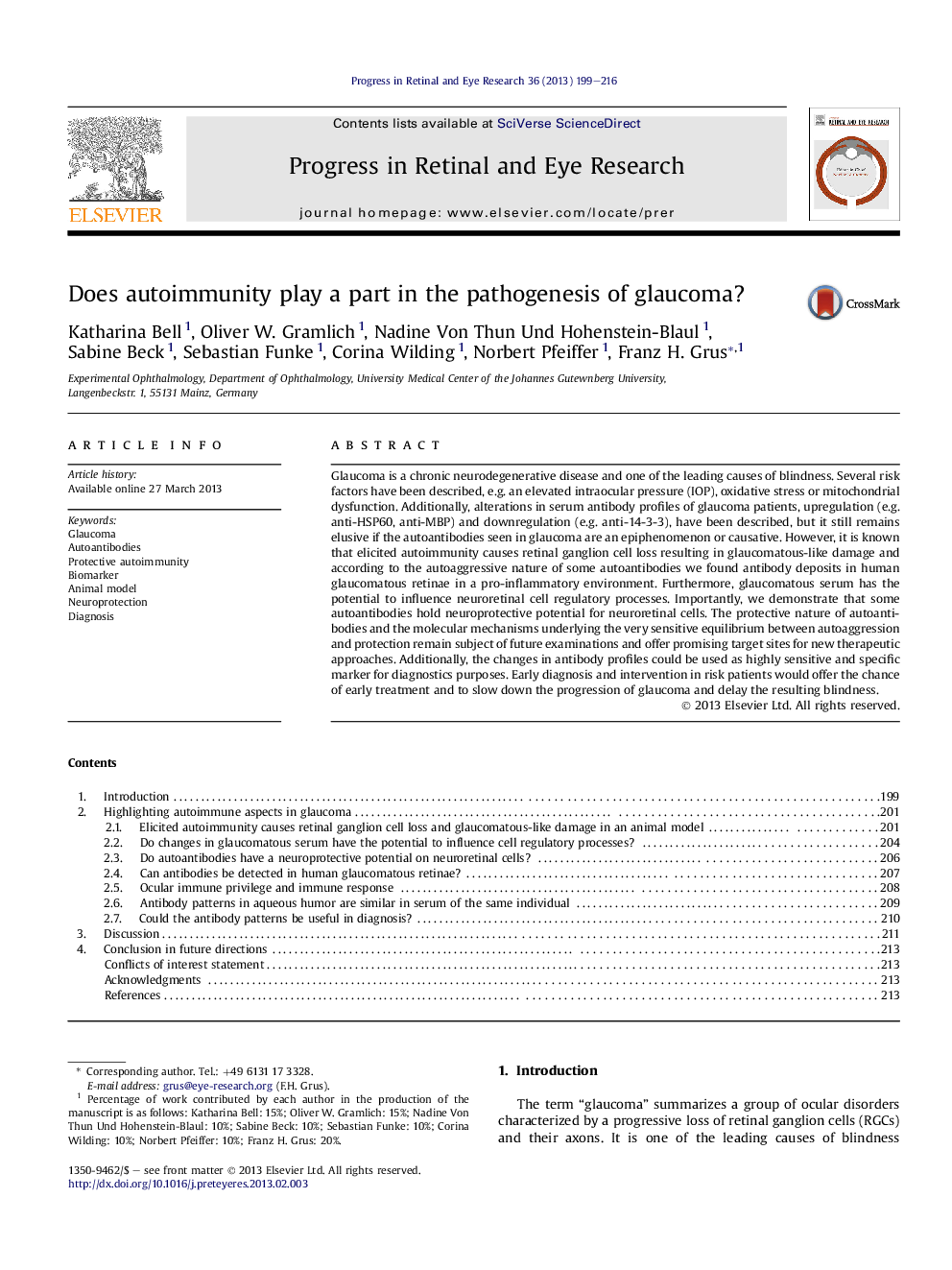| Article ID | Journal | Published Year | Pages | File Type |
|---|---|---|---|---|
| 6202765 | Progress in Retinal and Eye Research | 2013 | 18 Pages |
Glaucoma is a chronic neurodegenerative disease and one of the leading causes of blindness. Several risk factors have been described, e.g. an elevated intraocular pressure (IOP), oxidative stress or mitochondrial dysfunction. Additionally, alterations in serum antibody profiles of glaucoma patients, upregulation (e.g. anti-HSP60, anti-MBP) and downregulation (e.g. anti-14-3-3), have been described, but it still remains elusive if the autoantibodies seen in glaucoma are an epiphenomenon or causative. However, it is known that elicited autoimmunity causes retinal ganglion cell loss resulting in glaucomatous-like damage and according to the autoaggressive nature of some autoantibodies we found antibody deposits in human glaucomatous retinae in a pro-inflammatory environment. Furthermore, glaucomatous serum has the potential to influence neuroretinal cell regulatory processes. Importantly, we demonstrate that some autoantibodies hold neuroprotective potential for neuroretinal cells. The protective nature of autoantibodies and the molecular mechanisms underlying the very sensitive equilibrium between autoaggression and protection remain subject of future examinations and offer promising target sites for new therapeutic approaches. Additionally, the changes in antibody profiles could be used as highly sensitive and specific marker for diagnostics purposes. Early diagnosis and intervention in risk patients would offer the chance of early treatment and to slow down the progression of glaucoma and delay the resulting blindness.
